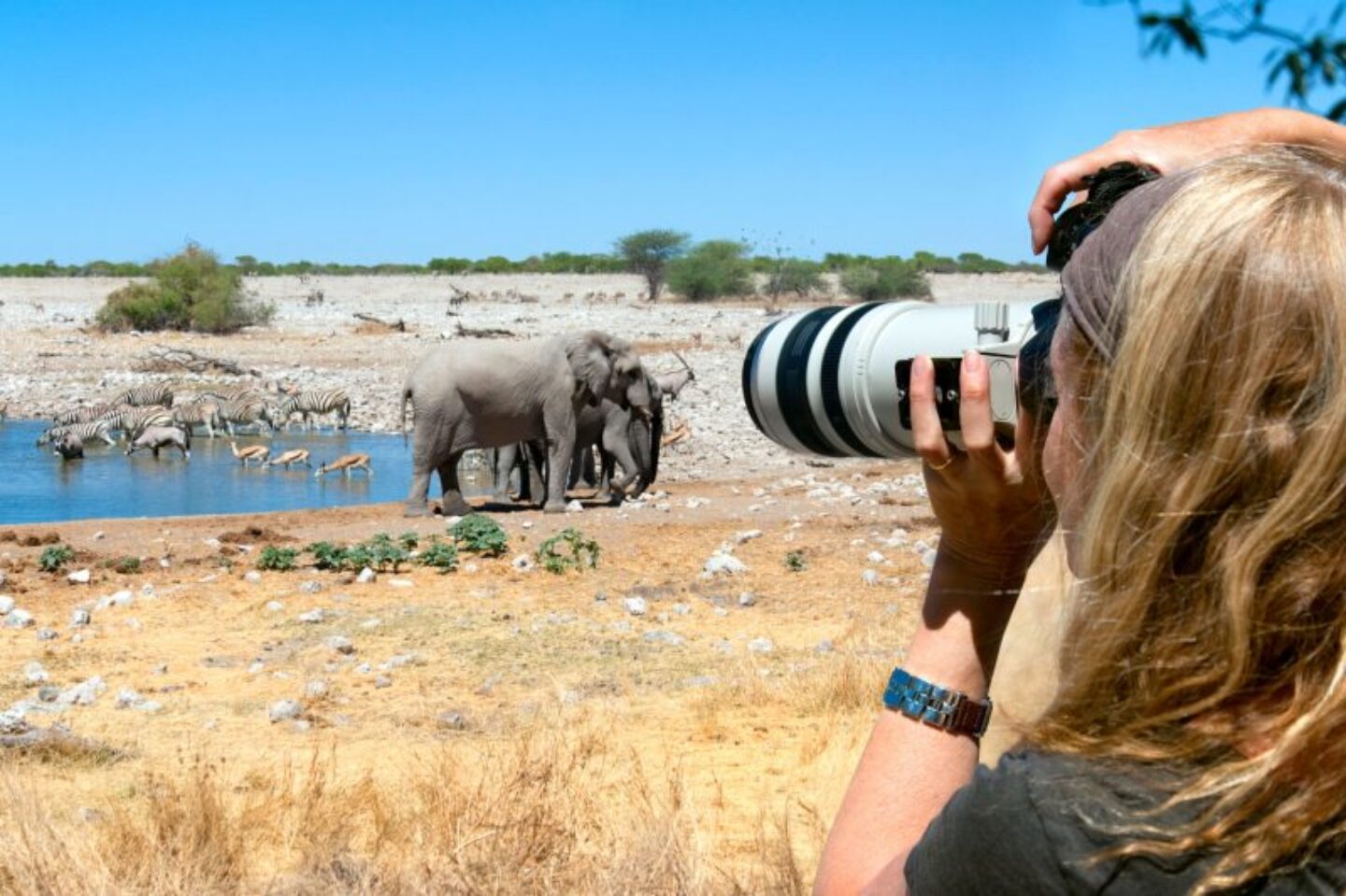
For any lover of wildlife, Etosha National Park is the jewel in Namibia’s crown. Largely flat with vast sun-scorched grasslands surrounding the famous ‘Etosha Salt Pan’, you’d be forgiven for thinking life couldn’t survive here. The reality, however, couldn’t be any more different.
With waterholes dotted throughout the reserve, a smorgasbord of wildlife thrives within Etosha. That, in tandem with its level topography and scanty bush, makes Namibia’s well-known national park the ideal place for a self-drive safari.
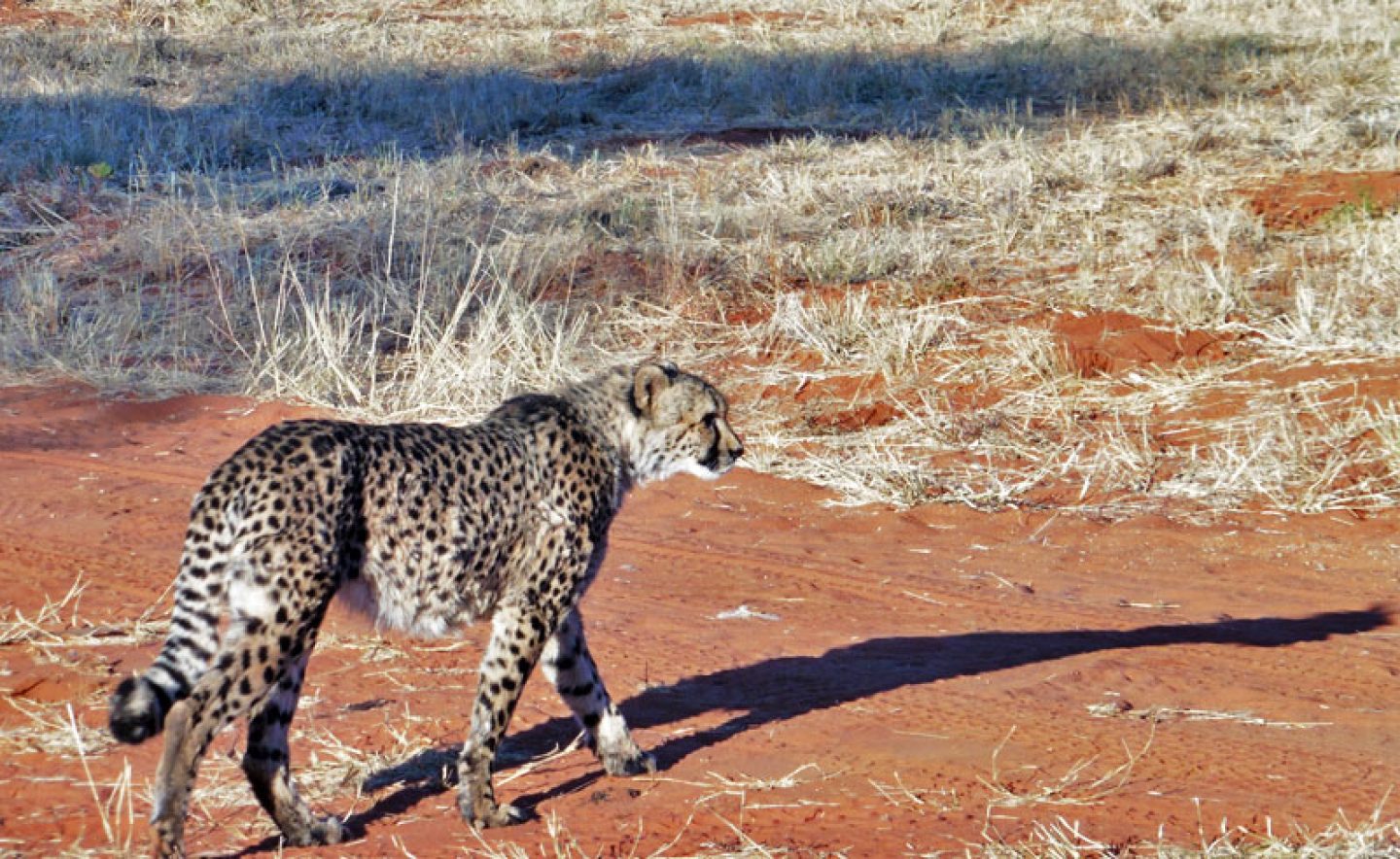
Visiting in early December, our trip followed a week of intense downpours. Such weather events are the lifeblood of the park, replenishing watering holes (although some are fed by underground springs) and feeding the varied flora scattered across the park.
As a result, excitement levels were peaking and our drive to Etosha – just under five hours from Windhoek – flew past. Before we knew it, the gates became visible in the distance and our self-drive safari adventure had begun.
With around 2 hours to explore before sunset, we’d set sensible expectations of what we might spot on our first evening; some antelopes and oryx would be fantastic, giraffes even better. Not even 10 minutes into our journey, we’d spotted plenty of gemsbok (oryx), warthogs, springbok, and giraffe!
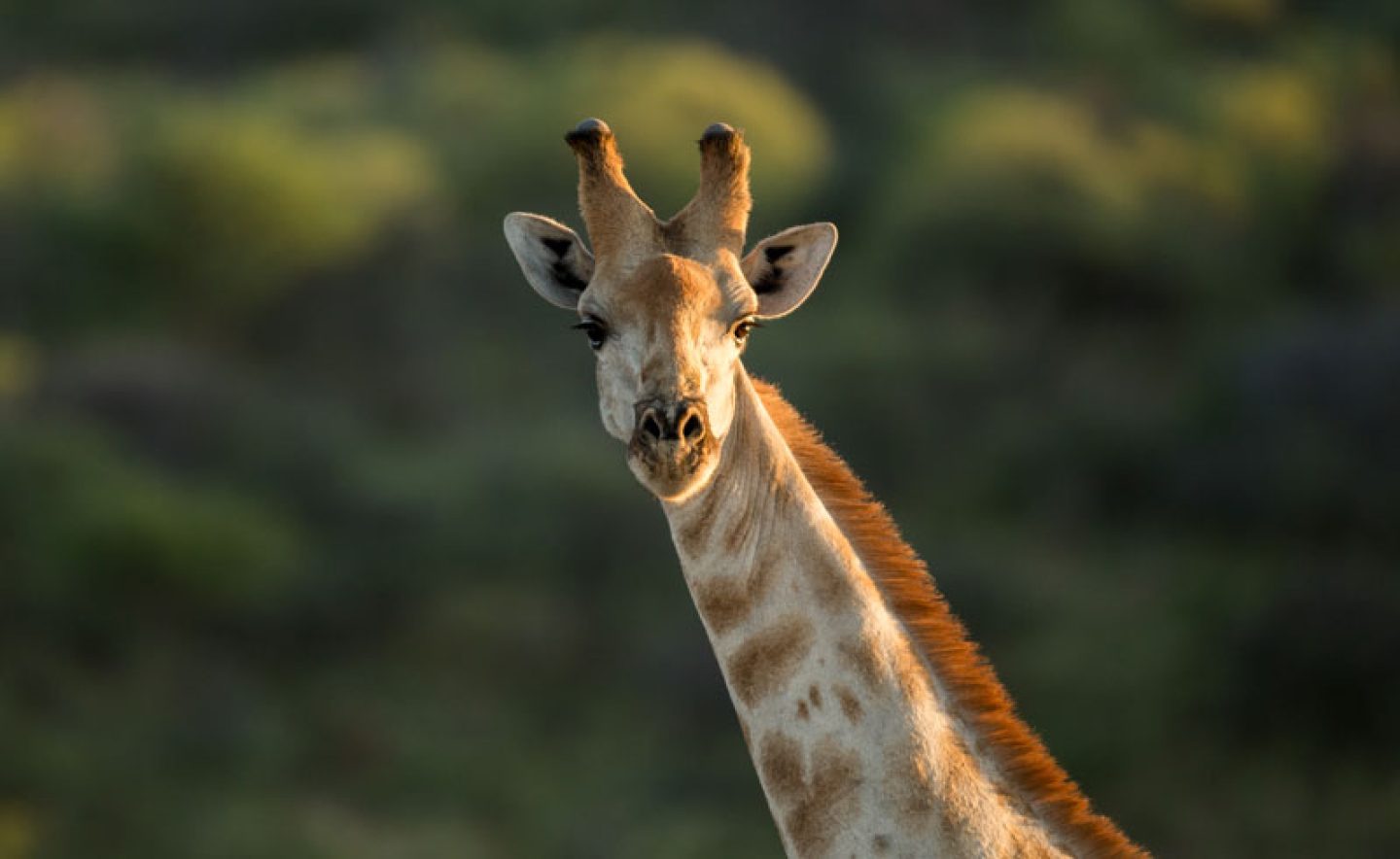
Then we became a little more tactical. Having purchased a map from the National Park office (roughly £1), the next target was a waterhole near the eastern side of the Etosha Pan. It was a hot day – around 38°C – and the big cats would inevitably need to rehydrate.
After around 15 minutes more driving, there they were: a pair of lions. They were on the move, looking pretty parched. After disappearing into the bush, the handful of other cars watching them – – set off in search of other wildlife. However, knowing that there was a waterhole nearby, we made a U-turn and set up camp next to the spring.
We sat in silence for around 20 minutes, carefully listening for any warning calls from the nearby baboons and springbok. Nothing. Then, seemingly out of thin air, the lions appeared. Gliding past our 4×4, they silkily sauntered down to the water. The best part? We were the only people there.
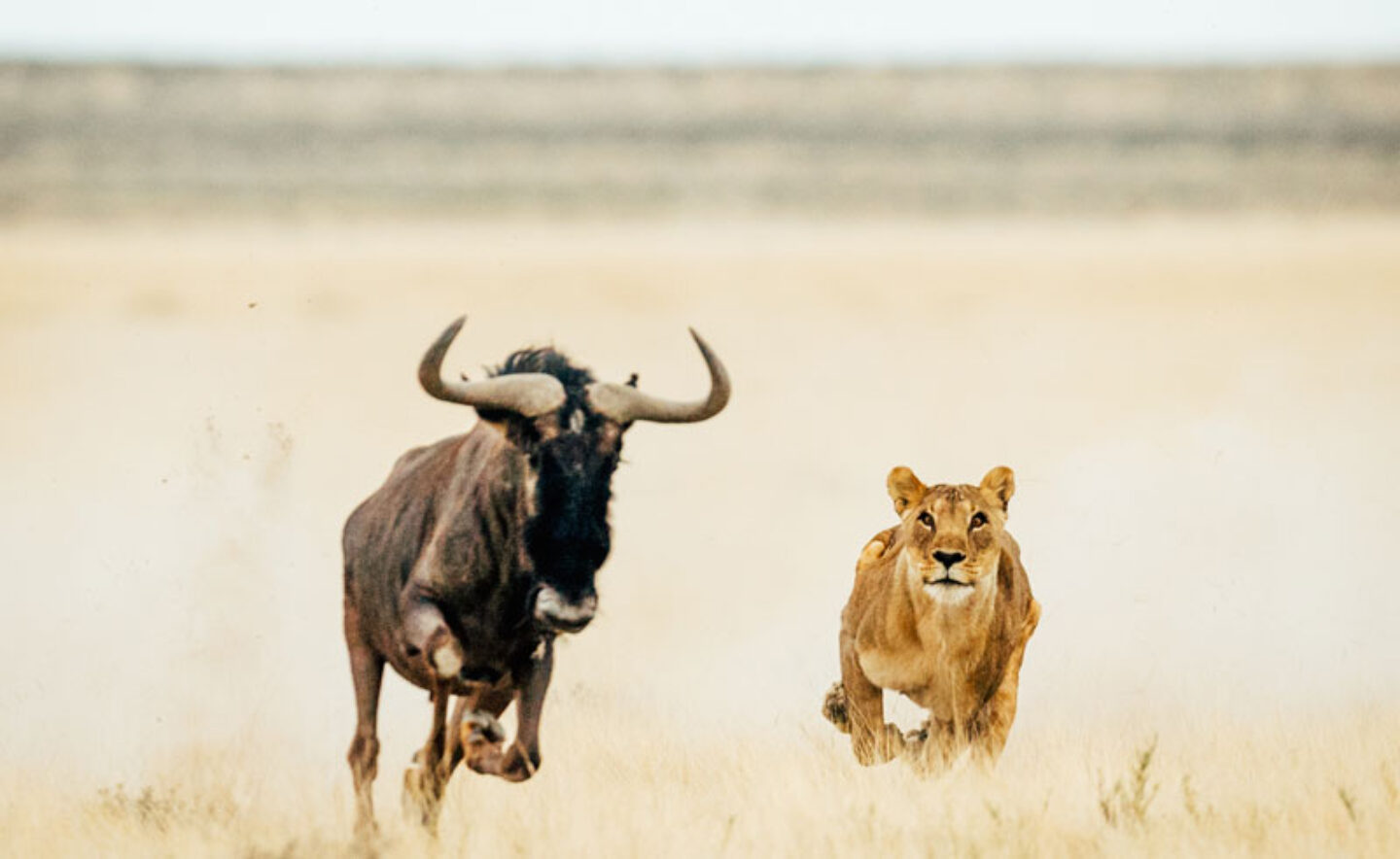
Dozens of bird species around us sang, tawny eagles flew above, giraffes grazed in the distance, and the golden light of an Etosha evening lit up the scene. We couldn’t believe our luck but, then again… was it luck?
On a self-drive safari, you are your own guide. This challenge is an exciting one, testing your knowledge of animal behavior and honing in your ‘spotting’ eye for tell-tale signs of particular spe-cies. For example, we knew that lions tend to move (and drink) in the cool mornings and the warm evenings. This basic knowledge led to an extremely special moment.

That evening, we returned to Mushara Lodge (just outside the park’s eastern gate) and studied the Etosha map over a cool drink. Chatting with fellow guests on their ‘spotting successes’ was a fan-tastic way to learn of particular hotspots. Self-drive safaris, although individual in their actual exe-cution, build the most amazing community to swap stories over the fire in the evenings.
Etosha has one of the largest populations of black rhino in the world and indeed, the most stable. Knowing that they loved a good acacia bush snack, some fellow guests told us they’d seen a thick bush area – accessible by a circular drive – in the middle of the park.
With an early alarm call the next morning, the mission to find black rhino had begun. Upon reaching the acacia bush area, our eyes were locked in to spot any movement. Despite their size, black rhino are surprisingly camouflage and indeed, are often far shorter than their favourite foods.
Around 45 minutes had passed until, finally, we saw her. Facing directly towards us, a female black rhino gorging on her breakfast. Again, it was just us. Nobody else. This is the absolute beauty of a self-drive safari in Etosha; these moments aren’t shared with the masses rendering them even more special.
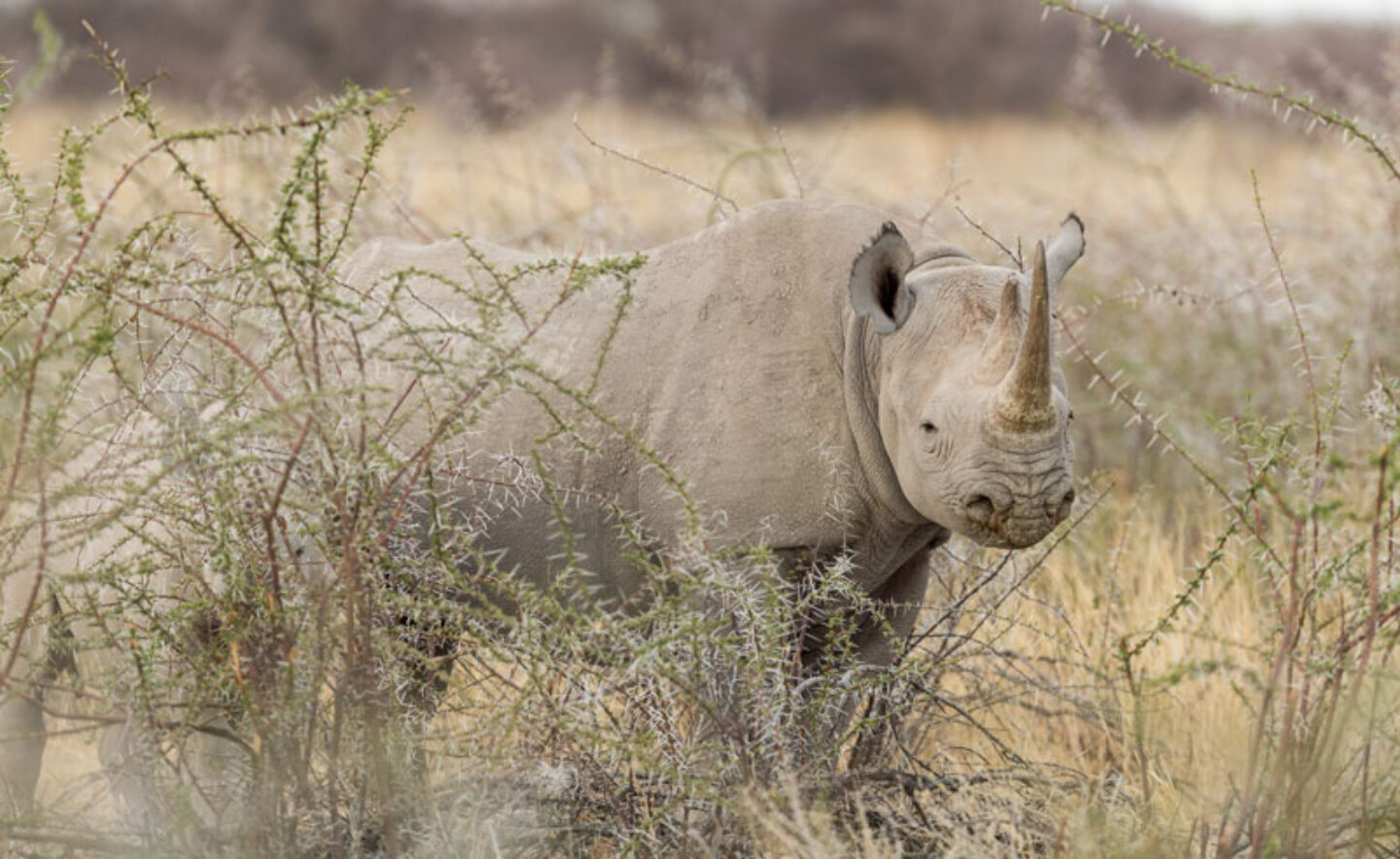
Over the next few days, we’d eventually spot cheetah, leopards, elephants, countless antelope species, blue wildebeest, zebra, hundreds of bird species, and so much more.
The self-drive experience in Etosha stays with you. It gets into your skin, leaving you wanting more or indeed, never wanting to leave! To travel through such a stunning wilderness is an absolute must-do when in Namibia. Actually, I’ll amend that: it’s an absolute must-do in your lifetime.
All images © George Turner

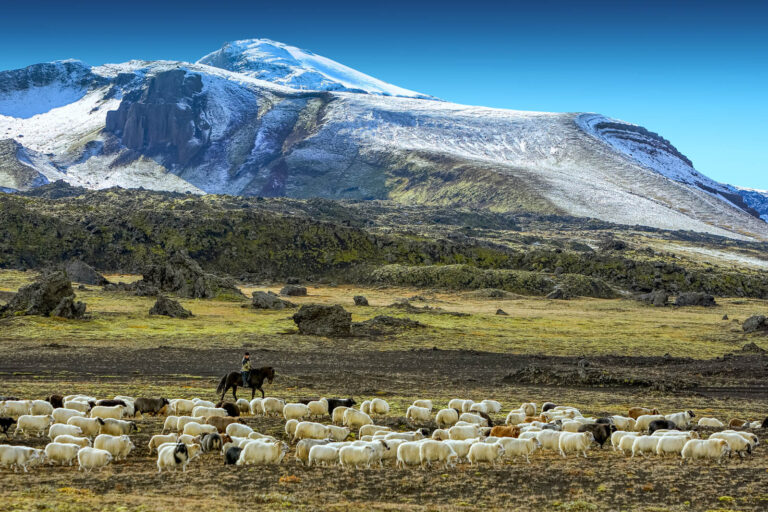
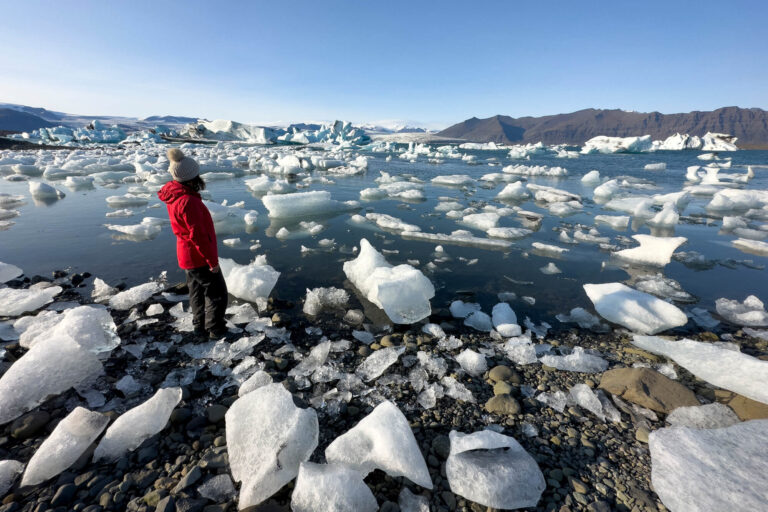



 Instagram
Instagram
 Facebook
Facebook
 YouTube
YouTube